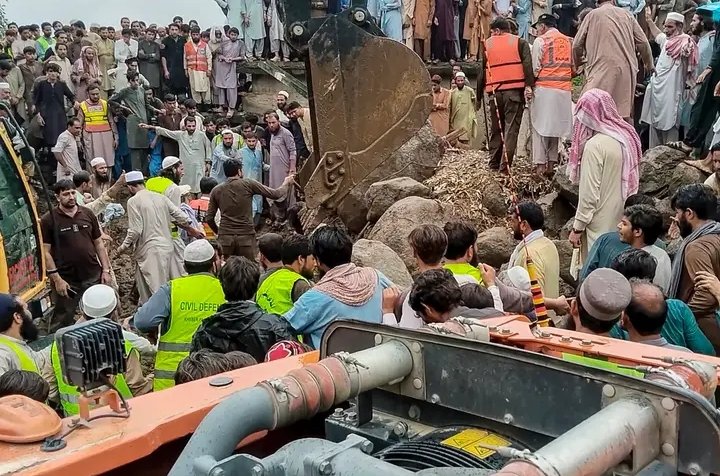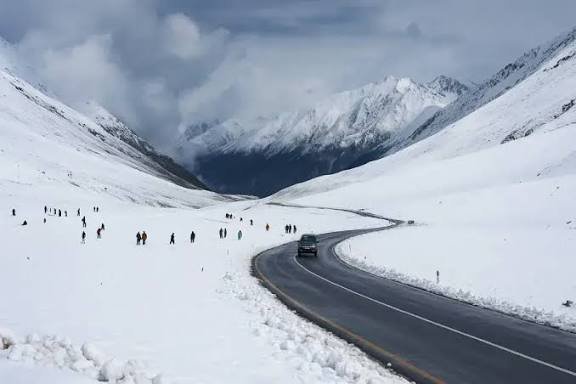Khyber Pakhtunkhwa (KP) is once again facing the devastating consequences of relentless flash floods, which have claimed hundreds of lives and destroyed vast areas of land and infrastructure. KP Flash Floods Death Toll Rises to 307 PDMA with dozens more injured and thousands displaced. The floods have caused widespread destruction across the province, damaging homes, crops, bridges, and roads while leaving many areas inaccessible.
This natural disaster has once again highlighted the region’s vulnerability to extreme weather events, exacerbated by climate change, deforestation, and poor infrastructure.
The Rising Death Toll
The PDMA has confirmed that 307 people have lost their lives in various districts of KP due to flooding and related incidents such as landslides, house collapses, and road accidents caused by heavy rains. The victims include men, women, and children, many of whom were swept away by the powerful floodwaters. Rescue teams have also reported missing persons in multiple districts, raising fears that the number of casualties may rise further as operations continue.
Hundreds of others have sustained injuries, and hospitals in flood-affected areas are struggling to cope with the influx of patients.
Areas Worst Hit
The floods have wreaked havoc across multiple districts of KP, including Swat, Shangla, Chitral, Dir, Nowshera, and Dera Ismail Khan. Swat Valley, known for its beauty, has turned into a scene of destruction as rivers overflowed, washing away houses, hotels, and farmland. Bridges connecting remote villages have been swept away, leaving entire communities stranded without access to food or medical supplies.x
In Upper and Lower Chitral, flash floods triggered by glacial melting and heavy rainfall have destroyed hundreds of homes and displaced thousands of people. Meanwhile, in southern districts such as Dera Ismail Khan, large-scale flooding has inundated agricultural lands, posing a severe threat to food security.
Humanitarian Crisis and Displacement
The floods have forced thousands of families to evacuate their homes and seek shelter in makeshift camps set up by the provincial authorities and relief organizations. Many displaced individuals are living under the open sky without access to clean drinking water, food, or medical care.
Children and the elderly are particularly vulnerable, with reports of waterborne diseases spreading in some camps. Relief workers have warned of an impending health crisis if urgent measures are not taken to provide proper sanitation and healthcare facilities.
Damage to Infrastructure
The destruction caused by the flash floods extends far beyond human lives. Roads and highways across KP have been washed away, severely hampering rescue and relief operations. Bridges connecting remote valleys to main cities have collapsed, leaving rescue workers struggling to reach affected areas.
Electricity poles, water pipelines, and telecommunication systems have also been damaged, cutting off communication in many districts. The loss of infrastructure has not only delayed emergency response but has also created long-term challenges for rehabilitation and rebuilding efforts.

Agricultural and Economic Losses
KP is heavily dependent on agriculture, and the floods have caused catastrophic losses to farmland, crops, and livestock. Fields of wheat, maize, rice, and vegetables have been submerged under water, and thousands of animals have perished. This devastation poses a serious threat to food supplies and the livelihood of local farmers. READ NEXT https://elevenpakistan.com/pakistani-origin-uk-girl-breaks-record/
Economists predict that the floods will have a long-term impact on the provincial economy. The damage to agriculture, businesses, and infrastructure is expected to run into billions of rupees, putting additional strain on the already fragile economic situation of the province.
Government and PDMA Response
The PDMA, in coordination with the provincial government and armed forces, has launched extensive relief and rescue operations. Helicopters, boats, and rescue teams have been deployed to evacuate stranded families and deliver relief supplies. Emergency funds have been released to support affected families, and medical camps have been set up in flood-hit areas.
The KP government has announced compensation for the families of those who lost their lives and financial aid for those whose houses were destroyed. However, many affected residents have complained of delays in relief distribution, citing bureaucratic hurdles and logistical challenges due to damaged roads.
Climate Change and Vulnerability of KP
Experts believe that the frequency and intensity of floods in Pakistan, especially in KP, are directly linked to climate change. Rising temperatures are accelerating glacial melting in the northern regions, while unpredictable monsoon patterns are contributing to heavier rainfall.
KP’s mountainous terrain and lack of proper flood management infrastructure make it particularly vulnerable to such disasters. Deforestation, unplanned construction near riverbanks, and poor urban planning have further increased the risks of flash floods.
Call for National and International Support
The scale of the disaster has prompted calls for both national and international support. Relief agencies have urged the federal government, NGOs, and global humanitarian organizations to provide immediate assistance in the form of food, shelter, medical aid, and financial resources.
Pakistan, being one of the countries most affected by climate change despite contributing minimally to global carbon emissions, requires long-term international support to build resilience against natural disasters.
Conclusion
The flash floods in Khyber Pakhtunkhwa have left a trail of devastation, claiming 307 lives and displacing thousands more. While relief operations are underway, the scale of destruction is overwhelming, and rebuilding efforts will require significant time and resources.
This tragedy serves as a reminder of Pakistan’s urgent need to invest in disaster preparedness, sustainable infrastructure, and climate resilience. For the people of KP, life will take years to return to normal, but their resilience and determination, supported by timely relief and rehabilitation, can pave the way toward recovery.
READ MORE



